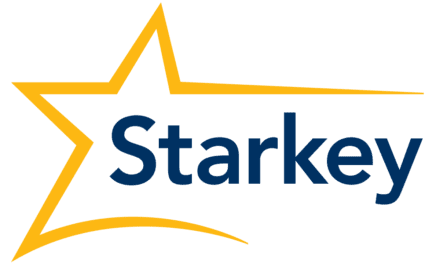Phonak, Stafa, Switzerland, with US headquarters in Warrenville, Ill, recently presented the second edition of the Hearing Care for Adults Conference, focusing on the special needs of the older population.
The conference convened worldwide experts in aging and audiology and more than 250 clinicians who work with older people with hearing loss, to share experiences and discuss the latest research and trends in hearing care for older people.
Phonak representatives say that we are currently witnessing an unprecedented population aging; while 20% of the global population was more than 60 years old in 2000, 28% will be older than 60 in 2020. The changing demographic trend means that the number of patients seeking treatment from hearing care professionals is also significantly increasing, which presents a number of challenges making it essential that clinicians have the knowledge and skills to help their older clients most effectively, says the company.
In two and a half days of interactive sessions in Chicago, numerous presentations, a clinician’s forum, a poster session, and podium discussions addressed aspects of hearing care for the elderly. The speaker panel included experts from around the globe, presenting the latest research results and clinical insights on topics such as communication and aging, amplification for older adults, the impact of hearing on dementia, effects of aging on speech perception, and the special needs of the elderly.
Key sessions of the conference centered around the questions of screening adults for hearing loss, whether the current audiological approaches meet the needs of older people, how services and products might be adapted to ideally fit the needs of the elderly, and what role early intervention and prevention play.
During his presentation, Robert W. Sweetow, PhD, from the University of California, San Francisco, focused on the idea that communication not only encompasses hearing, but also listening skills, cognitive-based interpretation, and communication strategies, and as such, that hearing aids should be provided in the context of an integrated rehabilitation plan that takes the entire communication spectrum into account.
Andi Vonlanthen, VP, group product development, and Stefan Launer, PhD, VP, advanced concepts and technologies, from Phonak AG, Switzerland, spoke of the importance of user ergonomics, signal processing, and wireless connectivity in hearing solutions to meet the specific needs of the senior population.
"A major challenge for older users is the ability to interact with the hearing systems," said Vonlanthen about the challenges of providing high-tech solutions for the older generations. "The user interfaces need to be designed in such a way that they are intuitive and manually easy to use for any hearing aid user, and especially elderly people."
The dexterity and cognition issues were considered the most relevant, and a major takeaway for participants was the need to take a holistic approach when working with elderly clientele, according to the company. Participants agreed that the elderly already represent a growing proportion of patients and that the trend can be expected to continue.
Patricia B. Kricos, PhD, professor of audiology and director of the Center for Gerontological Studies at the University of Florida, and president-elect of the American Academy of Audiology, is quoted by Phonak as having said "This conference was excellent. It is wonderful to have so many experts in areas of audiology aging at one meeting. I learned so much and also had confirmation of current practice and inspiration for future practice."
The full proceedings from the conference will be available soon for download under www.phonak.com/proceedings_chicago.
[Source: Phonak]




